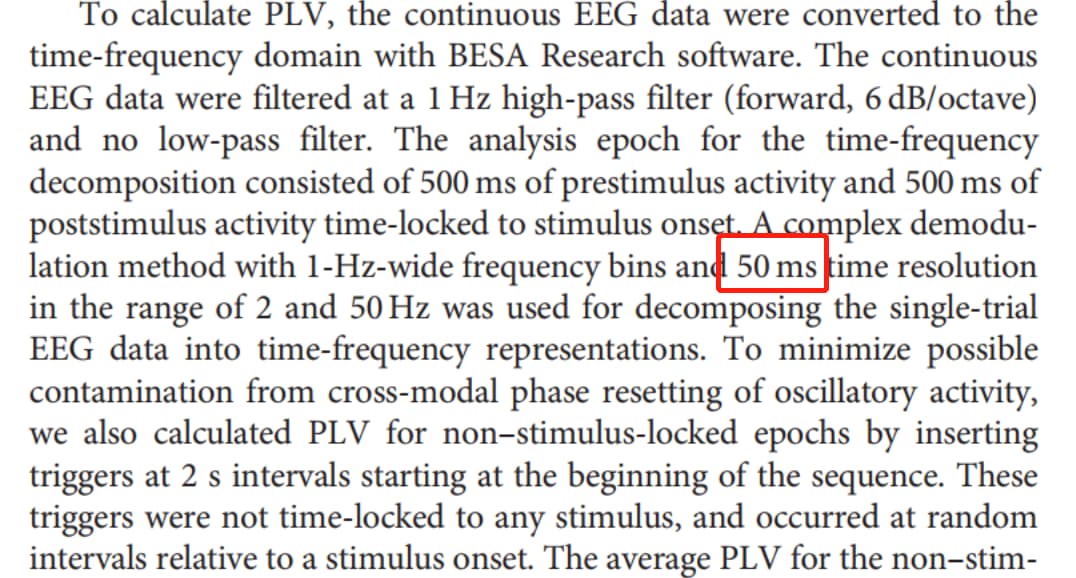Some studies that calculated PLV always describe how to decompose the single-trial EEG data into time-frequency representations, such as "A complex demodulation method with 1-Hz-wide frequency bins and 50ms time resolution in the range of 2 and 50 Hz was used for decomposing". What is the default time window when calculating PLV in Brainstorm? And how can I change it?
The PLV process in Brainstorm uses a band-pass filter followed by the Hilbert transform, exactly as described in the time-frequency tutorial:
Hi, Francois, thank you for your reply. Does it mean that if I compute PLV in the UI, The default time window will be the same as the default in Hilbert transform, and I can only use code to calculate it if I want to change it?
The Hilbert transform is applied to all the filtered signals.
In this approach of time-frequency analysis, the notion of time resolution is more related with the order of the band-pass filter used for each frequency band.
You can explore the properties of the band-pass filters use for the PLV in Brainstorm with the button "View filter response" in the band-pass filter process options:
https://neuroimage.usc.edu/brainstorm/Tutorials/ArtifactsFilter#Filter_specifications:_Low-pass.2C_high-pass.2C_band-pass
Sorry for the Unclear description. The figure is the study's method section, which calculated PLV based on the BESA software. It describes the time window when calculating PLV, and as I understand it, BESA has an interface for adjusting it. Thus, I would like to know the default time window for PLV calculation in Brainstorm and how to change it.
The method described in this text and in Brainstorm are not the same, you won't be able to make the input parameters match.
@Sylvain @hossein27en @Raymundo.Cassani @danielemarinazzo
Am I missing something here?
Indeed, @Francois is right. One thing is PLV (which is the same), another one is how you arrive at the (time-)frequency decomposition, which in Brainstorm is done by first selecting a time window and then filtering with some parameters, other options (as the one you mentioned) involve a time-frequency decomposition.
Here an example of how you can do it in Matlab in a similar setting, maybe you can modify it and then plug it into Brainstorm.
Thank you for your explanation. Does it refer to the input parameters in the figure?

Guess so
@Francois Hi, Francois. When using the function 'bst_connectivity' to compute a connectivity metric between two files, A and B, in MATLAB, which format should A and B be? The format of data that export from brainstorm is 'struct'. Can this data type be calculated?
I don't recommend trying to call bst_connectivity directly from a script. It is not documented and not expected.
Instead, generate scripts to call one of the connectivity process.
If you really want to understand how to call this function, the easiest would be for to place a breakpoint at the beginning of bst_connectivity, call the process of interest from the Brainstorm interface, with a selection of files in Process2 that matches what you are expecting to do from a script.
When the debugger stops, you can explore the contents of all the variables, this will give you an example of how to define the inputs to bst_connectivity.
